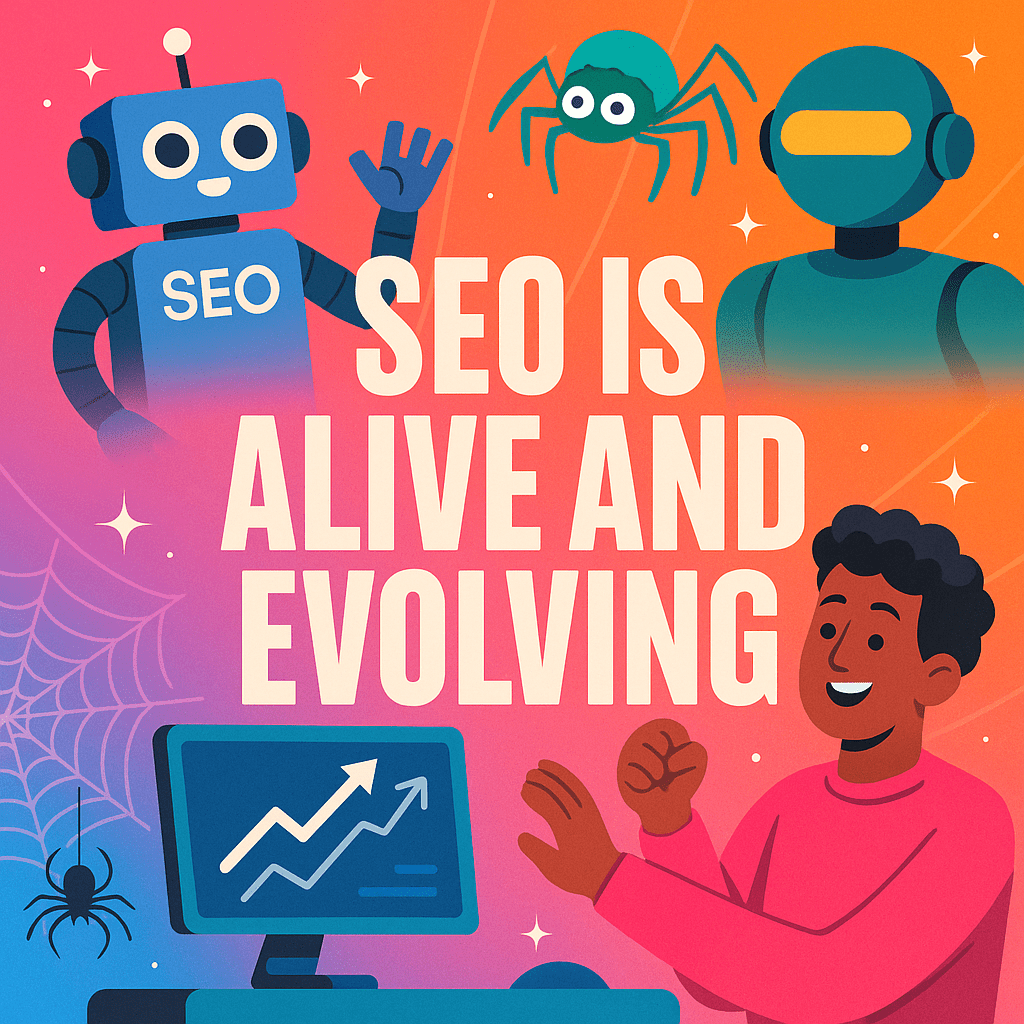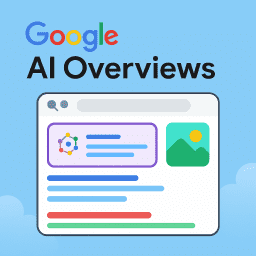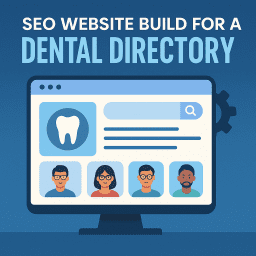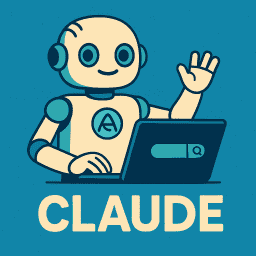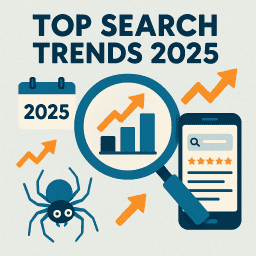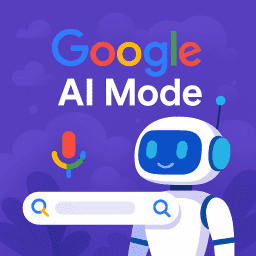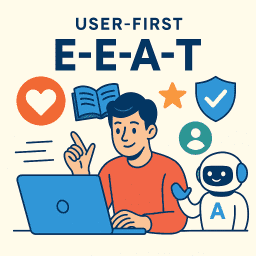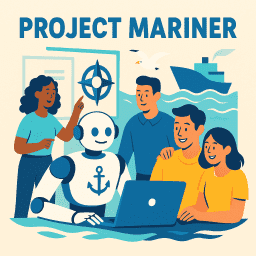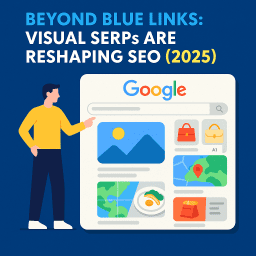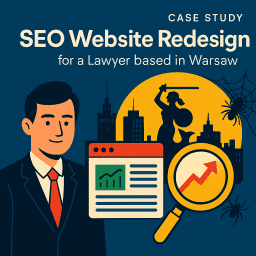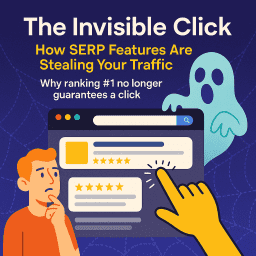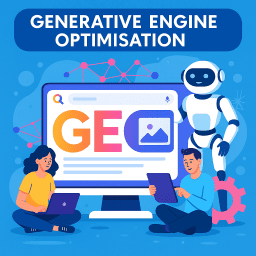AI & SEO Myths: Debunking Hype and What Works in 2025
Debunking AI SEO myths with facts that matter
👀 The Big Myth: “AI Killed SEO”
Every few years someone declares SEO is finished. In 2025 the latest culprit is artificial intelligence.
Almost overnight, a wave of so-called experts appeared, promising quick wins in Google AI Overviews, ChatGPT responses, and every new answer engine that emerged. Alongside them came a flood of AI-generated articles and posts proclaiming the death of SEO, complete with endless “how-to” lists on what you supposedly must do to rank in AI search.
Here is the truth in plain English: nobody is an expert in AI and SEO yet. The technology is new, the surfaces are changing and the rules are still forming. But that does not mean we are flying blind. The foundations that have worked for years still work now. Crawlability, indexability, content relevance, authority and trust remain the pillars. If you build those well, you put yourself in the best position to be discovered by both traditional search and AI-driven answers.
The aim of The SEO Guide Book has always been to empower small businesses to manage SEO themselves. That means keeping jargon to a minimum and focusing on the fundamentals. Yet, from time to time, it’s important to dive deeper into the more technical side of SEO. When we do, we turn to leading voices in the field, such as Aleyda Solís, International SEO Consultant and Founder of Orainti.
As Aleyda Solís put it, “The principles and pillars of SEO remain when optimizing for AI Search: crawlability, indexability, content relevance, E-E-A-T and popularity towards the relevant audience behaviour. What changes are the criteria we use to optimise based on the specific platforms’ characteristics.”
That is the spirit of this article: myth-busting based on what is proven to work, a clear explanation of what AI systems are actually doing and a practical playbook you can apply without the hype.
📜 A Short History of “SEO is Dead” Myths
The claim that SEO is dead is older than many people realise. Looking at the history helps put today’s hype into perspective.
- 2007–2009: Early claims came when social media grew. Critics said Facebook and Twitter would end the need for search engines. They did not. Search kept growing.
- 2011–2012: The Panda and Penguin updates led to panic. Thin content and link farms collapsed. Many said SEO was finished. In reality, quality SEO became stronger.
- 2015: Mobilegeddon. Google began prioritising mobile-friendly sites. Again, some claimed this was the end of SEO. It was not. It was the beginning of mobile-first SEO.
- 2015–2017: RankBrain introduced machine learning. Once more, “SEO is dead” headlines appeared. Instead, SEO adapted by focusing more on intent and relevance.
- 2019–2021: BERT and MUM allowed Google to understand natural language. The prediction: keywords no longer mattered. In truth, good content strategy mattered more than ever.
- 2023–2025: Generative AI and answer engines. New voices declared SEO dead. The reality: AI systems rely on the very content SEO creates.
Pattern recognised: every wave of innovation tightens the bar. SEO evolves. It does not vanish.
🧩 GEO, AI Overviews, AIO and the Name Game
There are many names floating around: GEO or Google Enhanced Overviews, AI Overviews, Answer Engine Optimisation, Generative Engine Optimisation, AI search and more. The labels create noise but the idea is simple. Users ask a question. An AI system composes a summary using content it can find and trust. Sometimes it cites sources. Sometimes it does not.
On some surfaces you can click for more. On others you stay within the assistant. Your goal does not change. You want to be eligible to be found, understood and cited, and you want users to click when a click is offered. That is SEO in plain clothes.
- GEO – Google’s enhanced summary surface. Visibility depends on how well your content answers the query and how clearly the system can extract and attribute it.
- Answer engines – ChatGPT, Perplexity and others summarise from the open web and from licensed data. They lean on grounding to fetch current facts.
- New acronyms – AIO, GEO, AEI etc. Useful shorthand but not new laws of physics. The foundations still apply.
📊 Reality Check: What the Current Data Actually Says
Aleyda Solís has shared simple but powerful context from industry surveys and traffic estimates. It cuts through hype and keeps strategy grounded.
| Metric | AI Assistant | Takeaway | |
|---|---|---|---|
| Visits (Aug 2025, indicative) | ChatGPT ~5.8B | Google ~83.8B | AI is growing fast but traditional search is still far larger. |
| Audience overlap | ~95% shared with Google | — | People use both, not one instead of the other. |
| Revenue share (median) | < 5% | > 50% | Traditional search still drives the majority of revenue for most sites. |
Direct quote for clarity: “LLMs still only bring less than 5% of revenue to most sites, while SEO still brings 50%+ of revenue.” That aligns with what many teams are seeing. AI surfaces matter and will keep growing, but the foundations are still paying the bills.
🔗 Grounding: Why Classic SEO Signals Still Feed AI
Large language models can generate convincing prose. For current facts they rely on grounding – fetching external, up-to-date sources. As Aleyda notes, “LLMs answers also rely on grounding when current, factual information is needed, which means SEO is vital for it.” If your page is well structured, fast, crawlable and trustworthy, it is more likely to be fetched, parsed and cited. This is one of the clearest bridges between good old-fashioned SEO and AI discovery.
- Crawlability and indexability – if bots cannot fetch it, no system can use it.
- Content clarity – answers should be visible on the page, not hidden behind complex scripts or only expressed in schema.
- E-E-A-T – demonstrate experience and expertise with specific details, authorship and clear sourcing.
- Popularity and citations – mentions on reputable sites and communities help machines decide you are worth quoting.
🧱 Structured Data: Helpful, Not Magical
There is debate about how much structured data drives AI visibility. Two ideas are both true at the same time and they do not conflict.
- Structured data helps machines understand your content – it supports eligibility for rich results and clearer extraction. It can also help AI systems identify entities, relationships and formats such as FAQs and HowTos.
- Structured data is not a substitute for visible content – if a fact only exists in your JSON-LD and not on the page, do not expect an answer engine to trust it. Schema should reinforce what users can read, not replace it.
In May 2025 Google reminded site owners that no special optimisations are needed for AI Overviews. Structured data helps clarity but only in line with strong content. StanVentures ran experiments and found LLMs ignored schema if matching visible text was absent. In other words, schema has to confirm content, not invent it.
Practical rule of thumb: write the answer for humans first, then mark it up for machines. Keep the two in sync. If you change the page, update the markup. If you add markup, ensure the equivalent visible text exists and is easy to find.
📚 Case Studies: Winners and Losers in AI Search
Looking at real-world examples shows how the fundamentals still decide outcomes.
- News publishers – Studies from 2025 showed some news sites losing audience when AI Overviews provided summaries that satisfied the reader without a click. Those who structured content with strong hooks and reasons to click continued to see traffic flow. Those with generic reporting saw sharper declines.
- E-commerce – Retailers using Product schema aligned with visible text saw their specs and availability data surface in summaries. Sites that skipped markup or hid key information in scripts were rarely cited.
- B2B firms – Service providers with clear FAQs and case examples found themselves referenced in AI answers. Firms that published vague marketing fluff were ignored.
The difference was not magic hacks. It was applying classic SEO discipline: clear answers, visible text, structured markup and authority signals.
✅ What Actually Works Today
- Answer-first content – start pages with a clear, scannable answer, then expand with supporting detail, examples and references.
- Chunking for retrieval – short paragraphs, descriptive subheadings and inline FAQs help AI systems grab the right passage.
- Structured data aligned to the visible text – Article, FAQPage, HowTo, Product and Organization are the usual workhorses.
- Reliable citations – where appropriate, quote authoritative data and attribute it clearly. Authentic references help both users and machines.
- Simple technical stack – fast pages, minimal render blocking, server-side or hybrid rendering for key content.
- Focused internal linking – help crawlers and users discover related answers and deeper detail across your site.
❌ Nonsense To Ignore
- “Rank directly in ChatGPT with one schema trick” – no credible evidence supports a single markup hack. Eligibility and extraction rely on content quality and trust.
- “SEO is dead” – traffic and revenue patterns say otherwise. AI search is an additional surface, not a replacement for everything else.
- “One prompt does it all” – prompts accelerate work, but process and quality control still matter.
📝 SEOFOMO Survey: What Teams Are Actually Doing
Aleyda’s community data provides a reality check. Here are the headline numbers and what they mean.
| Finding | Percentage | Commentary |
|---|---|---|
| Decision-makers asking about AI visibility | 91% | Shows this is no longer optional. Leaders want answers about AI, even if revenue impact is small. |
| AI platforms driving revenue | 0–5% for most | Revenue remains dominated by traditional SEO. AI is emerging, not yet core. |
| SEO teams owning AI strategy | ~75% | Most see AI as part of SEO’s remit, not separate. |
| Dedicated AI search strategy in place | ~35% | Few have mature strategies. Many are experimenting but not yet formalising. |
| Changed SEO processes for AI | 47% | Nearly half already adapting workflows – adding TL;DRs, FAQs, markup, citations. |
The lesson: teams are adapting, but not abandoning fundamentals. This is incremental evolution, not wholesale reinvention.
🔮 The Future: 1, 3 and 5 Years Ahead
What might AI search and SEO look like next? Here is a simple projection.
- 1 year: AI Overviews refine. Structured content and clear answers gain more weight. Early winners are cited more consistently. Measurement tools mature.
- 3 years: Multimodal search grows. Voice, image and video answers increase. SEO begins to merge with content strategy across all formats. Authority remains vital.
- 5 years: Answer engines integrate seamlessly with daily life via assistants, glasses or vehicles. SEO becomes about visibility anywhere users query. The principles remain: clarity, authority, accessibility.
🛠 A Practical Playbook For AI Search Eligibility
- Clarify the question you answer – define the user question in one line. If you cannot say it simply, your page will not either.
- Lead with the answer – put a short answer near the top in plain language, then support with steps, caveats and examples.
- Make it visible by default – avoid hiding key content behind tabs or heavy scripts. Progressive enhancement helps.
- Mark up the same answer – add matching schema types and keep them in sync with the visible text.
- Earn mentions – publish original data, tools or explainers worth referencing. Participate in reputable communities.
- Reduce friction – improve speed, tidy layout, and check accessibility. Good experiences reduce bounce and increase trust.
- Measure like an analyst – keep traditional KPIs and add a separate lens for AI surfaces. Avoid vanity metrics.
🧠 Mindset: Keep Fundamentals, Add Adaptations
Aleyda highlights a healthy split in the industry. Some teams double down on fundamentals. Others layer in AI-focused adaptations. The highest performers are usually doing both. They keep the foundations strong and add designs that make extraction easy. They humanise their pages while enabling machines to read and understand them. It is not either or. It is both and.
💸 Focus On ROI, Not Shiny Objects
New surfaces tempt teams to chase novelty. Resist that impulse. The goal is not to appear in a box. The goal is to drive qualified demand. Treat AI surfaces like any other channel. Hypothesise, test and measure. Keep what pays back. Park what does not. Continue building the durable assets you control – your site, your content library, your email audience and your relationships.
- Track impact on revenue, not just impressions.
- Attribute leads and sales back to content themes and formats.
- Compare AI surface experiments to improvements in SEO fundamentals.
🧠 Final Thought
There are no experts in a game that has just begun. There are, however, reliable ways to win while the rules settle. Good old-fashioned SEO still does the heavy lifting. Clear answers, solid structure, clean markup and real authority are as important today as they were last year. The difference is that machines are better at reading what you write. That rewards the sites that write for people first and label their content for machines second.
Keep your foundations strong. Add simple adaptations that make extraction easy. Measure what matters. Ignore the noise. The teams that do this will benefit from traditional search and from the new AI surfaces as they mature.
📌 David Roche on AI and SEO
David Roche says: “AI search has not rewritten the laws of ranking. It has raised the bar for clarity. If you answer better, structure better and prove you are worth citing, you will keep winning.”
📣 What the Experts Are Saying
- Aleyda Solís – “The principles and pillars of SEO remain when optimizing for AI Search. Crawlability, indexability, content relevance, E-E-A-T and popularity still matter.”
- Seasoned SEOs – “Write visible answers in plain English. Then mark them up. Schema should match what users can read.”
- Growth leaders – “Test AI surfaces. Report on revenue. Do not stop building durable assets you own.”
Also read
Holographic Search: How Voice, Gesture and 3D Will Change SEO
Optimising Your Content for Voice Search in 2025
The Last Click: How AI Erased SEO and Rewired the Web
❓ FAQs
How do I prepare my site for both AI Overviews and traditional SEO without duplicating work?
Lead with a short, visible answer. Expand with clear sections and examples. Add matching schema and ensure fast, accessible pages. One well structured page serves both worlds.
How can I tell if AI search is driving revenue or only impressions?
Tag pages that you design for answer extraction. Track assisted conversions, branded searches and landing page performance. Compare trends to your baseline SEO and direct traffic.
How should I structure FAQs so they help AI extraction without cluttering the page?
Group related questions under a single section. Keep each answer concise and specific. Mark up the same questions with FAQPage JSON-LD that mirrors the visible text.
Why is visible text more important than schema for AI answers?
Answer engines prefer to quote what users can read. Schema helps machines understand the format, but it works best when it confirms what is already visible.
How do I build authority and citations that AI systems will trust?
Publish original research, checklists or tools. Contribute expertise on reputable platforms. Earn mentions from communities and publications relevant to your audience.
Why do some sites lose clicks even when they appear in AI Overviews?
Summaries can satisfy the query on the surface. Improve your snippet value: lead with a hook, promise deeper detail and place a compelling reason to click near the top.
How often should I update content to stay eligible for AI grounding?
Update when facts change or when you can add clarity, data or examples. Freshness for its own sake is not a strategy. Revisions should improve usefulness.
How can small teams compete with bigger brands in AI search?
Choose specific problems to answer better than anyone else. Be the clearest, most helpful source on that niche. Depth and clarity beat scale for many queries.
Why should I keep investing in internal linking?
Links help crawlers and users discover related answers. They also show how your pages support each other, which helps establish topical authority.
How do I spot snake oil in AI SEO pitches?
Watch for guarantees, secret hacks and claims that schema alone will make you rank. Ask for a measurement plan and proof tied to revenue outcomes.
Video Recap – AI SEO Myths vs Reality: What’s True in 2025
Can AI really do SEO better than humans? In this video, I’ll break down the biggest myths about AI in SEO – what’s true, what’s not, and how to use AI the right way to stay ahead in 2025.
AI won’t replace SEO – it’ll redefine it. Use it with purpose, add your expertise, and you’ll stay ahead of every algorithm and every update.


